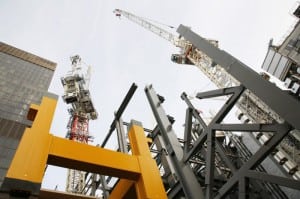Who’s Killing Coal? It Isn’t Obama
The U.S. coal industry is in a tail spin. That’s particularly true of eastern, underground coal, less so of low-cost Powder River Basin surfaced-mined coal in Wyoming and Montana. Companies are closing eastern mines, firing miners, filing for bankruptcy protection and reorganization.
Large parts of the legendary Eastern coal industry are struggling, perhaps never to recover. Arch Coal, the nation’s second largest coal company, filed for Chapter 11 bankruptcy reorganization in January, seeking to restructure some $4.5 billion in debt. Alpha Natural Resources, another large coal producer, also filed for bankruptcy. Peabody Energy, the nation’s largest coal company, may be headed toward bankruptcy. U.S. coal production has hit a 30-year low.
Across coal country, the beleaguered are asking, “Who killed coal?” They point to the Obama administration and his Environmental Protection Agency. They blame a Congress that has been unable to cope with the political challenges to coal. Coal, the victims claim, is dying as a result of Washington’s policies.
But the whole “Washington killed coal” claim doesn’t stand up to analysis. First, coal isn’t dead or dying. The Energy Information Administration estimates that U.S. coal production for 2015 will end up at 890.5 million tons, down from 999.7 million tons in 2014, and will decline again to 888.3 million tons this year. Big declines. But that’s still a lot of coal being mined. Most of it is going to electric generation in the U.S. EIA says it expects to see coal production in 2017 of 814 million tons, a further decline. Somebody’s making money digging and selling the rock that burns.
For Appalachian coal, where the industry is truly suffering, the major culprits are two: natural gas and China. Compared to Powder River Basin coal in Wyoming and Montana, eastern underground coal is very expensive to mine. In the past, the higher energy value (often double the Btus/pound of PRB coal) of Appalachian coal has kept many mines in West Virginia, Kentucky, Pennsylvania, and Illinois in the market, particularly at mine-mouth generating plants.
In the past eight years or so, low-cost natural gas has been killing the market for high-Btu Appalachian coal. Last month, EIA noted, “So far this winter, natural gas consumption in the electric power sector (gas burn) has been higher than in any previous winter.” That comes at the expense of coal and has little to do with regulation and a lot more to do with markets.
Then there is China. Many in the power industry don’t grasp that a lot of eastern underground coal is ideally suited to steel production. It’s called metallurgical coal, or “met coal,” used to make coke. It’s a premium product. When eastern coal producers – who aren’t stupid – saw declines in sales of their coal for power generation, they hitched their business wagon to the star of the Chinese economy and its growing, insatiable need for steel and met coal.

A recent analysis by the Rhodium Group says a “hidden cause” of coal’s collapse is the precipitous decline of China’s economy. That’s led to a sharp reduction in demand for steel and a concomitant slump in demand for coal. While the decline in coal use in U.S. power generation is important, according to the analysis, “The more important source of coal industry distress has nothing to do with the U.S. power sector. Indeed it has very little to do with the U.S.”
Anticipating the decline in the U.S. steam coal market, met coal producers borrowed heavily to increase their production, assuming that China’s spectacular growth would continue. Bigger companies gobbled up smaller met coal producers. The Rhodium Group analysis notes, “While a relatively small share production in tonnage terms, met coal has traditionally fetched a much higher price than steam coal both in the U.S. and around the world. Met prices surpassed $200 a ton in 2011, 250% more than relatively expensive Central Appalachian steam coal sold for during that same period of time.”
Then met coal prices collapsed to around $85/ton and have fallen since. The Rhodium Group analysis said: “What caused the drop in met coal prices that tanked the U.S. coal industry? One word…China. Chinese steel demand has been the driving force behind the met coal market for more than a decade, and that market is global, determining the prices paid for met coal mined in the U.S. even if it’s shipped somewhere else.”
U.S. coal companies that bet on China’s continuing growth now face debt loads that current market prices won’t support. The answer is Chapter 11 bankruptcy reorganization and debt restructuring. Those companies won’t disappear. Creditors will take a haircut and the coal companies, downsized and streamlined, will survive.
Don’t blame Obama for coal’s decline. Blame U.S. gas. Blame China.